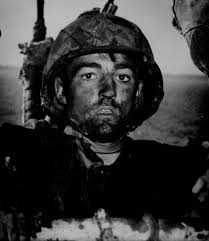I've been working on the chapter on PTSD in my Fear and Fight: A New and Better Understanding of Our Natural and Learned Responses to a Threat. Fascinating subject. In this post I will share some information about combat-related PTSD.
The first thing that needs to be understood about PTSD is that PTSD is a generic term and includes different types of PTSD. Different types of PTSD means different symptoms and different treatment.
Evolution and Posttraumatic Stress: Disorders of Vigilance and Defence by Chris Cantor is the first book to examine PTSD from an evolutionary perspective. Cantor argues that a confounding issue in the study of trauma is the blurring of boundaries between fear and loss-related phenomena. He suggests that the study of responses to extreme fear involves PTSD and that of loss involves depression: ‘PTSD might be more useful if it was restricted to the emotion fear; loss is adequately catered for by depression’
Cantor is comparing apples with oranges here. Fear is an emotion, loss is not. Appraisal theory has a stress appraisal being classified as either harm/loss, threat, or challenge. It is better to speak of threat-related and loss-related PTSD.
Cantor states that fear is the key emotion in (threat-related) PTSD. However, empirical evidence suggests that there is a unique relationship among PTSD, anger, and aggression, particularly in veterans. Why? Because warfighters are trained to cope with threats with anger and aggression. While a benign stimulus in PTSD is erroneously appraised as threat, the trained response of a warfighter/veteran to a threat is anger and aggression. That trained response is reinforced in combat when it is successfully employed to survive life-threats. (See Chemtob et al (1997) 'Anger regulation deficits in combat-related posttraumatic stress disorder' Journal of Traumatic Stress.)
Compare that to rape-related PTSD. In those cases, fear is the key emotion and the response is our natural or instinctive response to a threat rather than a learned/trained one.
There are many issues that arise from this conception of PTSD. For instance, Possis et al (2014) investigated driving difficulties among military veterans and the potential pathways that underlie risky driving behaviour. The risky driving behaviour pertains to driving behaviour in the relatively benign civilian environment upon return from deployment. Possis et al start off by explaining that military personnel deployed to Iraq and Afghanistan often develop mental health difficulties (e.g., PTSD), which may manifest as problematic driving behaviour: ‘Veterans may be more likely to engage in risky driving and to subsequently be involved in motor vehicle accidents and fatalities’ (2014, 633). Possis et al propose three mechanisms underlying driving difficulties in the population group under investigation: influence of fear, influence of anger and aggression, and influence of thrill seeking and sensation seeking.
When considering the influence of fear on driving difficulties among military veterans, Possis et al explain that,
Certain military experiences may make veterans more prone to fear-related driving difficulties. Military training itself may have an influence; the importance of ‘tactical awareness’ or being aware and able to react to danger immediately at all times is emphasised. Constantly being on guard and aware of potential threats might make an individual more apprehensive and anxious. In discussing his anxiety in dense traffic, the patient of one author (E.P.) commented that ‘my [military] training taught me it’s not safe to be boxed in. … individuals with significant driving anxiety are likely to make catastrophic predictions about driving situations (e.g., ‘trash on the side of the road could be an IED’) and are likely to attend to threat-related cues to the exclusion of other information. Additionally, these individuals are likely to engage in avoidance behaviour, such as steering clear of traffic or underpasses.’ (2014, 634-635)
